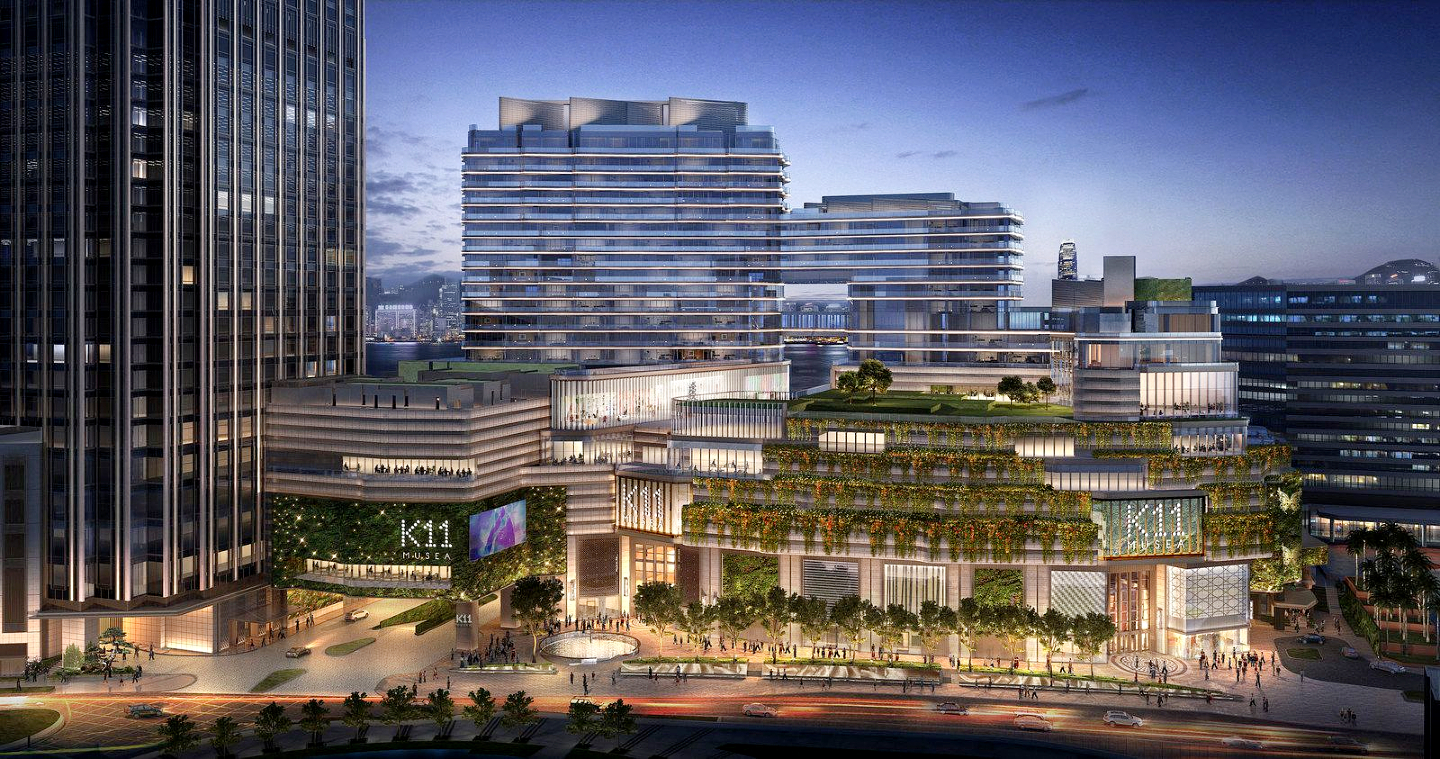
K11 Musea is the jewel in the crown of Victoria Dockside's mammoth US$2.6 billion redevelopment (Photo: K11 Musea)
It was a beautifully sunny winter’s afternoon, with blue skies and a slight breeze that rustled the palm fronds of the garden we were in. A glimpse of the city’s waterfront, behind the K11 Atelier skyscraper on the left and the distinctive wave-inspired K11 Artus residence complex on the right, brought a rush of excitement.
For a moment, it felt like we were in Australia or New York, but in fact, we were standing on precious commodity in the world’s most expensive real estate market — a rooftop farming area in Hong Kong. More remarkably, the sustainability-themed Nature Discovery Park, as it is named, is part of a mall.
The latest retail gem in the bustling waterfront district of Kowloon’s Tsim Sha Tsui somewhat defies description. Deriving its name from the tagline “A muse by the sea”, K11 Musea is the brainchild of Adrian Cheng, the 40-year-old Harvard-educated wunderkind who is the scion of the New World Development conglomerate and Chow Tai Fook jewellery chain.
_k11_musea_nature_discovery_park.jpg
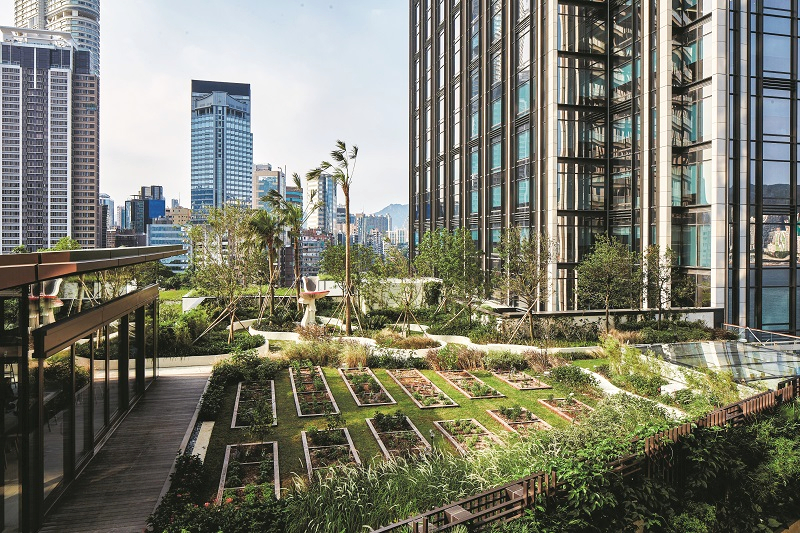
Cheng established his K11 brand with the “art mall” concept in Hong Kong, Shanghai and Guangzhou more than a decade ago. His latest passion project — we are told Cheng personally oversaw most of the design details — is nonetheless his most ambitious yet, a sort of culmination and combination of his entrepreneurial vision and personal interests that he meticulously crafted for over 10 years.
K11 Musea is the jewel in the crown of a larger project — the mammoth US$2.6 billion, three-million sq ft Victoria Dockside redevelopment that includes the lengthening of the adjoining Avenue of Stars promenade to nearly 500 metres and the creating of the Salisbury Garden public space. The redevelopment has brought a renewed sense of glitz to the waterfront cultural district of Tsim Sha Tsui.
Also within the Dockside complex is the first Rosewood hotel in Hong Kong, sitting on the higher floors of the K11 Atelier, which also houses commercial offices in its tower. The hotel is owned by the Cheng family, along with the K11 Artus hotel and residence across from it, connected by a “visual corridor” thoroughfare.
manor-suite-_rosewood_hk.jpg
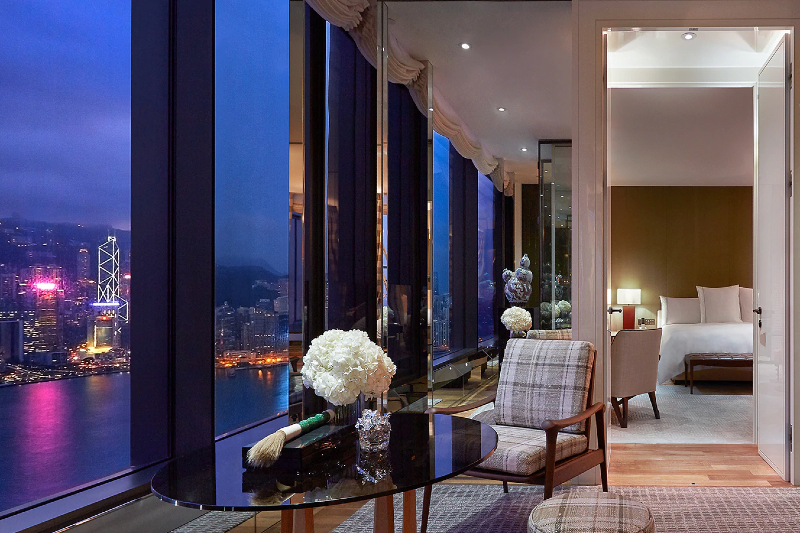
The corridor, which sees a constant stream of cars dropping off guests and visitors, also connects to the waterfront promenade, offering unobstructed views of the central Hong Kong skyline. It was a welcome sight for this writer each day when she crossed over from the Rosewood Hong Kong to explore K11 Musea, though there is also an internal connecting door from the hotel that takes one straight into the mall.
To actually call K11 Musea a mall is considered an affront, as I found out when the word was innocently uttered. Officially, it is known as a “cultural-retail destination”, or a “Silicon Valley of Culture”, as described by Cheng, one that represents a confluence of cultures and creative ideas in one place.
If it sounds a tad grandiose, the visionary behind it has certainly earned the right to boast — if not for the 100 creative powers he enlisted to realise his vision for the Dockside, then for the sheer daring of it all.
It is a boldness steeped in a rich legacy of innovation — three generations worth in fact. In 1978, before K11 Musea, there was the New World Centre, a ground-breaking multi-complex concept then consisting of offices, serviced apartments, a hotel and mall that saw many firsts in international retail. It was also the home of the first and largest performance venue, predating the Hong Kong Coliseum.
k11_musea_interior.jpg
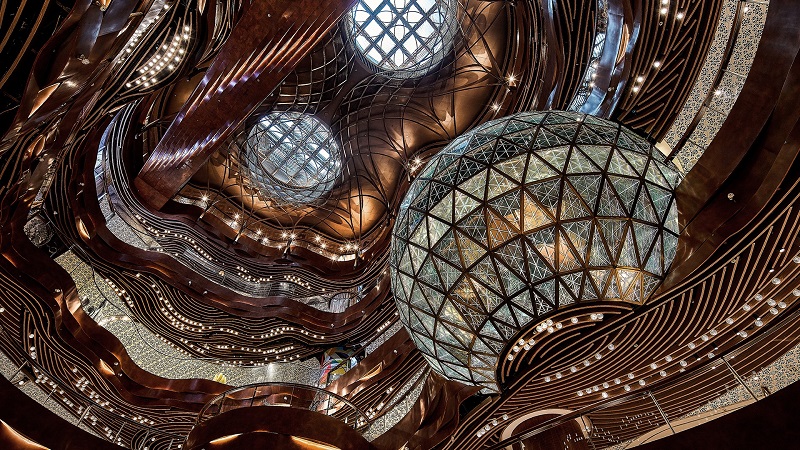
On top of that, there is the historical significance of the Dockside area, which was home to Holt’s Wharf, a godown instrumental in Hong Kong’s boom as one of the busiest shipping ports in the world, with the important Kowloon-Canton Railway station close by.
Cheng cleverly tapped the rich history of the area and his family’s legacy in K11 Musea, be it in design tributes or in the carefully cultivated narrative, from retaining the original 1970s waffle ceiling of the New World Centre in one section to massive art installations, handcrafted terrazzo flooring embedded with seashells and rope-wrapped pillars that are Dockside-inspired. At one of K11 Musea’s entrances hangs an industrial-style chandelier. Designed by Czech Republic light designers Lasvit, the yet-to-be-completed mass of pipes with bulbs — nicknamed Victoria — will emit sounds and steam, an ode to a time gone by when Hong Kong was as an entrepôt and transport hub.
There is no lack of firsts established for the city’s new “it” lifestyle and retail destination, which opened in August last year. Spanning 10 floors and 1.2 million sq ft, K11 Musea puts design, sustainability architecture and art at the forefront. To encourage culture and creativity, Cheng created a sunken plaza in an outdoor area before the entrance in collaboration with James Corner Field Operations (JCFO), the New York-based landscape architects responsible for the likes of the High Line in Manhattan.
victoria.jpg

Featuring an amphitheatre-style seating gallery surrounded by a five-foot-tall cascading waterfall, the sunken plaza is not only a gathering point for some seeking fresh air, or in the summer, cool seating, but regular performances also take place on its sunken stage.
In terms of retail, apart from the comprehensive range of luxury brands, there is a curated factor in K11 Musea’s selection, which intersperses established names with lesser-known ones, several of them firsts in Asia. One of them is the first MoMA Design Store in Greater China, and the largest in Asia, along with Fortnum & Mason’s first store and restaurant in Asia, taking up a space along the corridor promenade. There is also straight-from-runway online fashion platform Moda Operandi’s first showroom in the region.
But one does not need to go to K11 Musea just for the shops. There are far more things to do besides window shopping, and here are a few highlights.
ARCHITECTURE + DESIGN
Arguably the most important thing one should do when visiting K11 Musea for the first time is to sign up for the architecture or brand tour. With over 100 creative talents involved in the mall’s creation, there is bound to be a long list of details to note, starting with the distinctive geometric pattern panels by PLandscape that line the entrance. Drawing inspiration from the Arabic influences of the Silk Road, the eight-corner motif also incorporates good feng shui elements. This is a mall where you would want to visit every lift lobby area and toilet — each with its own unique design, ranging from ship hull to garden and industrial. Of course, the iconic landmark of the mall is the Opera Theatre — the main atrium with its striking wavy copper fixtures, and the Oculus, two glass-covered openings on top that also form the infinity symbol and admit skylight. The Artisan Lounge at the centre of the ground floor is a popular dining and teatime spot, where, fuelled by a jazz playlist Cheng personally approved, one can soak in the surrounding ambience.
k11_musea_donut_playhouse.jpg
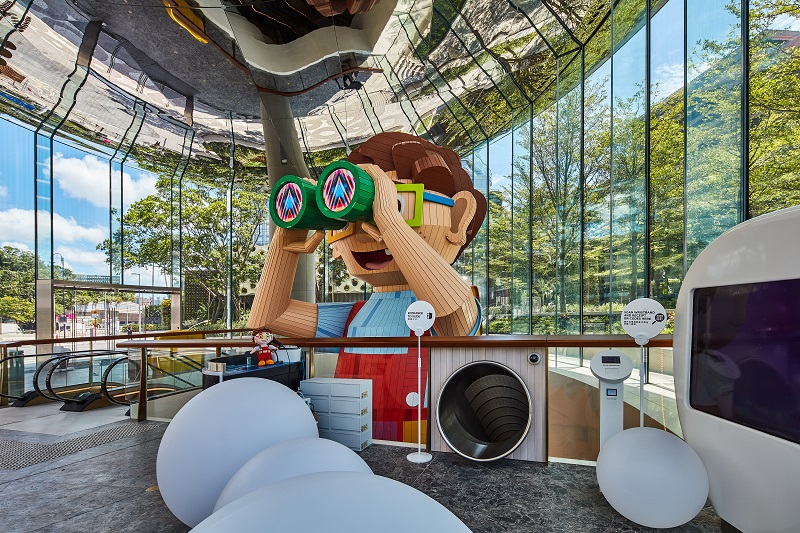
If you have time, walk out of the mall and down Salisbury Road to the Donut Playhouse, a small stand-alone structure that connects visitors to the underground retail spaces and the Mass Transit Railway. The playhouse, by award-winning Danish designer Ole Barslund Nielsen, is encased by five layers of glass, while the ceiling comprises specially curved glass mirrors. But the winning feature here is the Happy Mega Slide, which covers three floors and leads to an interactive edutainment play-area for children and a family-friendly café. The Donut character, a giant figure visible from the entrance, is a curious boy inspired by a young Cheng.
ART + FURNITURE
Every corner of K11 Musea is a feast for the eyes, if one knows where to look. I would highly recommend dropping by the Koncierge on the ground floor to sign up for one of its art or furniture tours. But if you would rather wander around at your own pace, there are more than 40 contemporary artworks to seek out. Some double as sitting areas — Hong Kong artist Samson Young’s mini-golf art installation, Big Big Company, or Zhang Enli’s Parrots of Five Colours, for example. Outside, Katharina Grosse’s colourful Untitled painted blocks are unmissable, designed to encourage public interaction. Do also make a stop at The Gold Ball, the distinctive glass sphere that overlooks the main atrium, where pop-up exhibitions are regularly held, or meander through level three with its numerous graffiti works.
k11_musea_-_kube_at_k11_musea_c_kevin_mak_courtesy_of_oma_3.jpg
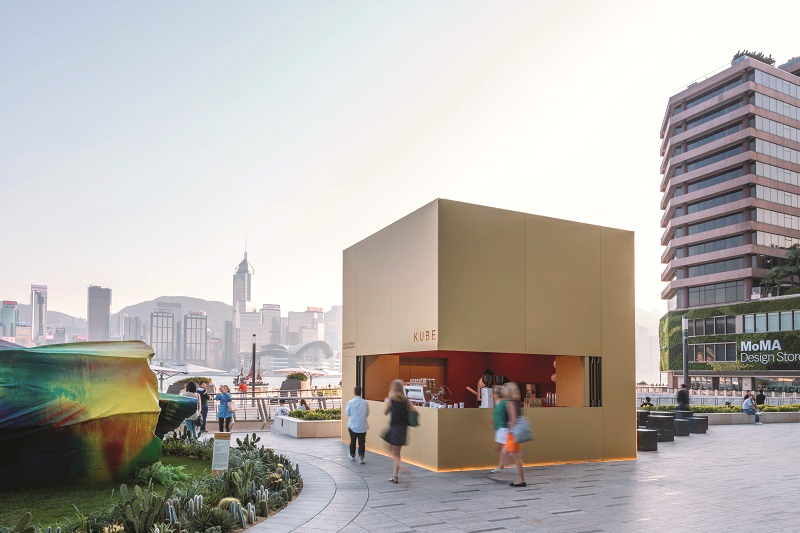
Cheng is well known for his furniture collection, and he has loaned 19 pieces from five Danish modernist designers — Kaare Klint, Hans J Wegner, Flemming Lassen, Finn Juhl and Nanna Ditzel — to the mall. The pieces are scattered along the corridors, with replicas placed alongside for visitors to sit on.
NATURE + GREEN SPACES
Atypically for an urban retail space, K11 Musea has about 50,000 sq ft of live greenery on its façade. The certified green building also features a two-level rooftop open space, dubbed the Bohemian Garden, with a large grass lawn that visitors can enjoy a picnic on, or just take a break from retail therapy. Families would particularly find this space useful, as a Peacock Playground adjoins the lawn, though entry is only by booking, and after a certain amount of spending has taken place. The good news is that your children will have the custom-designed play equipment and water play area all to themselves for the 15 or 30 minutes that you book it for. Also in the garden is the beautiful Elephant Grounds café, which is popular for al fresco brunches and leisurely weekend coffee breaks under its hexagonal “trees” that also function as a rainwater harvester.
nature_discovery_park.jpg
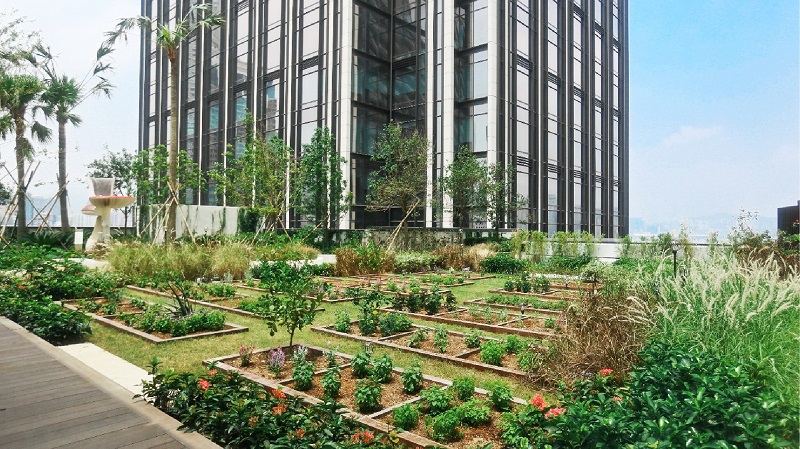
Then there is the Nature Discovery Park, probably the most impressive fixture of K11 Musea. While cosy, its short garden walk and seating area is still a great form of escape, with the vegetable planter boxes — which one can subscribe to for growing one’s own produce — providing charming scenery for the Farmhouse, a private farm-to-table dining space that creates its menu from seasonal vegetables from the garden. Prior booking is needed to dine there, but just taking a seat at the table and enjoying a moment of quiet is well worth a visit. There is also a tour one can sign up for, which offers explanations of urban farming techniques and of the aquarium at the side of the park, a novel way of reimagining the ocean life in the South China Sea at Victoria Harbour below — if it had been untainted by pollution.
This article first appeared on Feb 10, 2020 in The Edge Malaysia.


